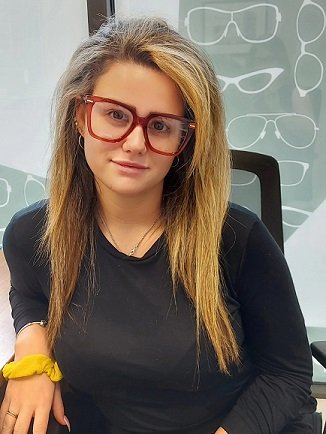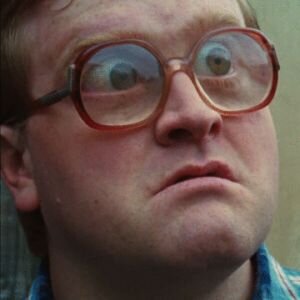Big Glasses: Why They Aren't Always The Best
When we are assisting patients in choosing a pair of glasses, there are many different factors that play a part in why we recommend certain frames. Choosing a great pair of glasses is all about balancing the functionality of a medical device and finding a style that fits a patient’s face shape and personality!
Why Is It Important To Have Glasses That Fit Properly?
Our Optometric Assistant Victoria has a small face, so these Missoni frames are HUGE on her! She says they make her look cross-eyed!
1) Comfort: Glasses are meant to sit with the majority of their weight in the bridge, which sits on your nose, and on the temples, which sit at the top of your ears. If glasses don’t fit properly the weight proportions will be uneven, causing pressure on the sides of your face (too small) or on the tops of your ears (too big). Over-sized frames also cause the common problem of frames sliding down your nose or temple bends at an uncomfortable 90 degree angle (hockey stick temples). Frames also become heavier when we combine them with a prescription lens. If you have a high prescription, it takes more lens material and therefore a thicker lens to create your precise prescription. If you have a correctly fitting frame, the lens thickness can be cut away more at the sides, allowing for lighter weight lenses.
2) Function: When you purchase glasses, you have a choice on what types of lenses that you purchase based on your prescription and what purpose they serve you. A basic stock lens, focuses a lot of your prescription right in front of your eye. As you look away from that main focal point, your vision out of the sides of the lens won’t be as clear. These can be very helpful for patients who have low prescriptions or mainly wear contact lenses. If you purchase a Digital Lens, we create that lens specifically fits your frame and prescription. This allows us to create a wider field of view and minimize peripheral distortion.
This might sound very complicated or technical, but what is most important is that if you have a frame that is very large for your face, but purchase a stock lens, your glasses won’t be functioning at their best because of the peripheral distortion discussed above.
Bubbles from Trailer Park Boys comes to mind when finding an example of a large plus prescription in a large frame!
3) Aesthetics: The way somebody’s eyes look when you view them through prescription lenses changes based on what type of vision they require.
The eyes of patients who have a minus prescription appear smaller, while the eyes of patients with a plus prescription appear larger. So, imagine if you have a large minus prescription AND a frame that is too large for your face. Your prescription is going to make your eyes look itty-bitty and the giant frame is going to add to the illusion. On the flip side to that, imagine if you have a giant frame a high plus prescription!
What Are the tips to finding a well fitting frame?
Dr. Hines tried on a beautiful pair of Ted Baker frames that we recommend for people with smaller faces! See how her eye sits in the middle of the frame? It rests squarely on the bridge of her nose and the temples don’t bow out when they head towards her ears.
Great glasses fitting Dr. Hines!
The frame sits properly on the bridge of your nose, with contact at the top of your nose and down the sides.
Your pupils sit in the middle of the lenses and the top of the lenses come in below your eyebrows so you don’t see them when you look through the lenses.
Temples go straight back from the sides of the glasses without digging into the sides of your head or bowing out away from your head.
The temple bend should sit at the top of your ear and the temple should end just above your earlobe. Excess temple length can cause glasses to feel heavy on the bridge of your nose and the frames to slide down your nose.
The bottom of the frame should not touch your cheeks. Make sure to smile while you’re wearing them to make sure your cheeks aren’t pushing the frame around when you laugh.


